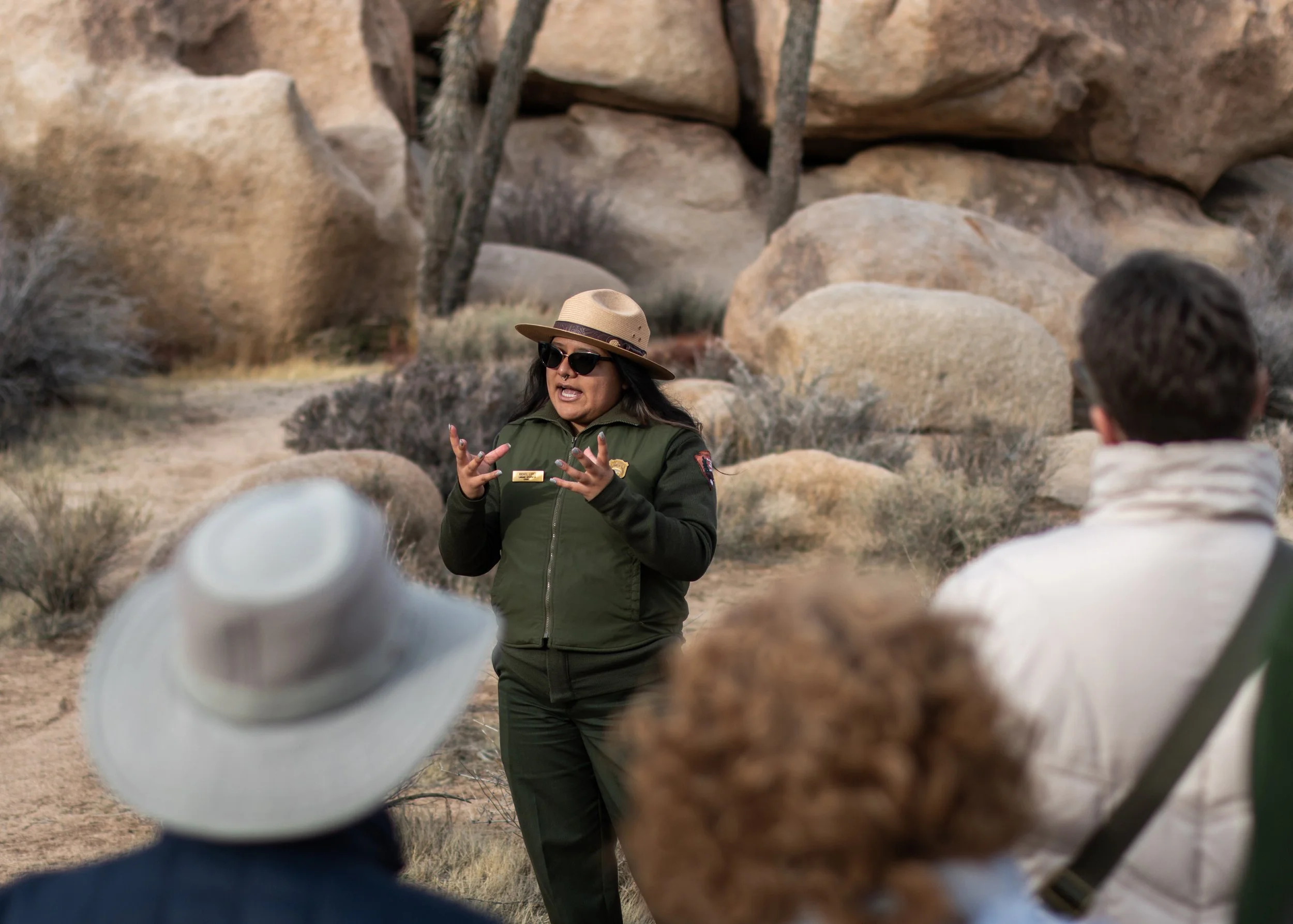BASIC INFO
Joshua Tree National Park | “the park”
Joshua Tree National Park is a vast and rugged landscape (one of the largest amongst national parks) where two distinct desert ecosystems—the Mojave and the Colorado—meet, creating a unique environment filled with dramatic rock formations, iconic Joshua trees and a rich diversity of plant and animal life. The park is also steeped in cultural history, from Indigenous communities to early settlers and modern-day rock climbers drawn to its legendary boulders.
With over three million visitors annually, Joshua Tree welcomes adventurers, nature lovers, and artists from around the globe; offering endless opportunities to explore its otherworldly beauty. However, the desert is an extreme and fragile place, and preparing properly will ensure a safe and enjoyable visit.
Things to Do:
-
Enjoy a night under the stars at one of several campgrounds (reservations required for some).
-
Take in breathtaking desert views along Park Boulevard, Pinto Basin Road, or Keys View.
-
Explore trails ranging from short nature walks to strenuous backcountry routes.
-
Visit remnants of early mining operations or explore Indigenous petroglyphs.
-
Spot bighorn sheep, jackrabbits, and the famous Joshua trees.
-
With over 8,000 climbing routes, Joshua Tree is a world-class destination for climbers.
-
The park’s dark skies make it an excellent spot for viewing the Milky Way.
Important Visitor Information for Joshua Tree National Park
Operating Hours & Access
Joshua Tree National Park is open 24/7, year-round, including on designated fee-free days, when entrance fees are waived.
Peak seasons: Spring and major holidays are the busiest times—expect crowds and limited parking at popular trailheads. Plan your visit early in the day or explore lesser-known areas to avoid congestion.
Be Prepared for Desert Conditions
Joshua Tree’s remote landscape offers no gas stations, stores, or water sources inside the park. Come fully prepared:
Water and food: Bring at least one gallon of water per person per day, along with sufficient food and electrolytes.
Navigation: Cell reception is unreliable throughout the park. Download offline maps via the official NPS app before arriving or carry a paper map.
Extreme temperatures: Summer heat often exceeds 100°F (38°C)—hike early in the morning or late in the evening, and take frequent shade breaks.
Help Protect the Park
Joshua Tree is a fragile desert ecosystem—help preserve its beauty and history by following “Leave No Trace” principles:
Stay on trails to help protect desert plants, some of which take decades to grow.
Do not remove rocks, plants, or artifacts—they are part of the park’s natural and cultural heritage.
Secure food and trash to avoid attracting wildlife—feeding animals disrupts their natural behaviors and diets.
Drones are prohibited to maintain tranquility and protect wildlife.
Pets are not allowed on trails for their safety and to protect the park’s ecosystem. They are permitted only in campgrounds, picnic areas, and along paved roads.
Campfires are only allowed in designated fire rings—desert vegetation is highly flammable.
Safety and Wildlife Awareness
Speed limits are reduced to protect slow-moving wildlife like the endangered desert tortoise and other sensitive species.
Off-road driving and graffiti are strictly prohibited to preserve Joshua Tree’s natural landscape.
Weather and Safety Considerations
Joshua Tree’s climate can be unpredictable, with temperature swings from scorching heat to freezing cold, sudden rain, or high winds.
Check real-time conditions before your visit via the NPS current conditions page and the Belle Mountain live webcam.
Flash floods can occur during storms—avoid washes and low-lying areas during rain.
Carry a first aid kit and let someone know your plans before heading into remote areas.
Your safety is your responsibility—plan ahead, stay informed, and respect the desert environment.
For official park updates, visit NPS: Joshua Tree.










